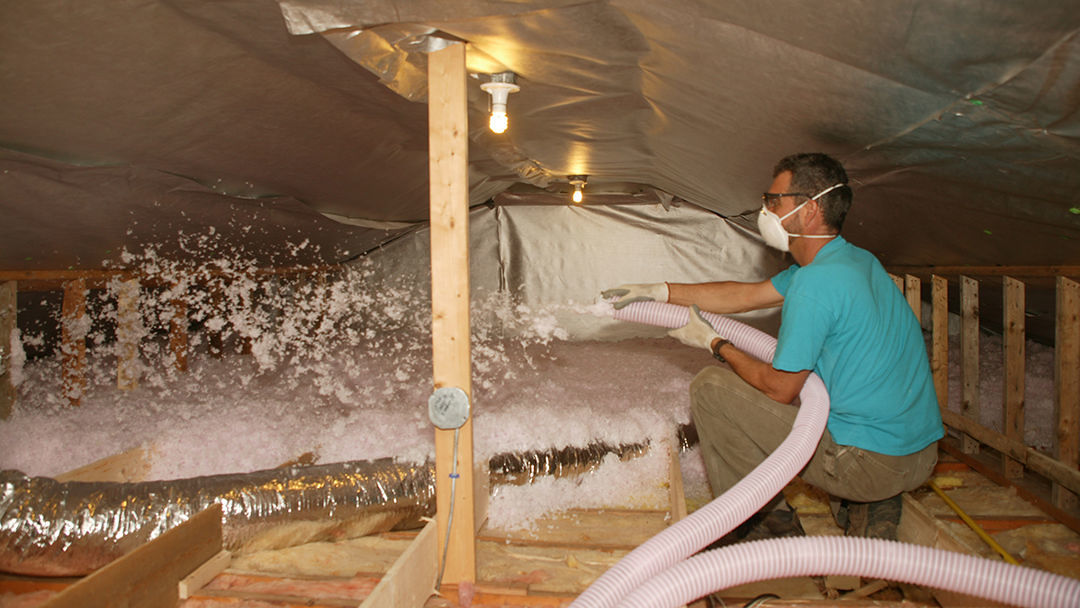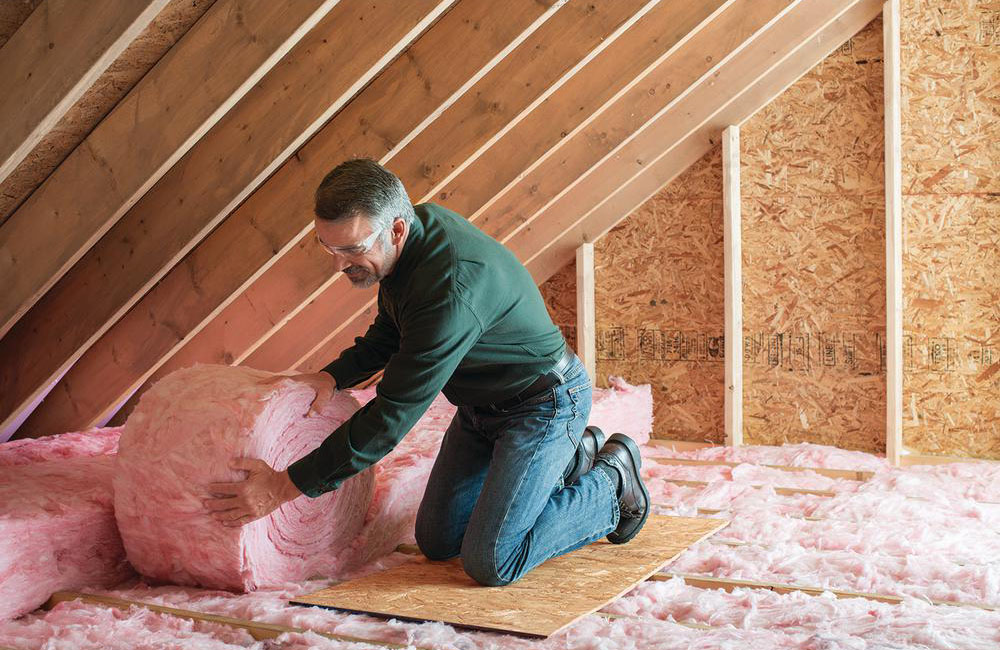How Attic Insulation DFW Can Change Your Home's Environment Control
How Attic Insulation DFW Can Change Your Home's Environment Control
Blog Article
Discover the Different Kinds of Attic Insulation and Their Special Benefits for Your Home's Energy Performance

Fiberglass Insulation
Fiberglass insulation is among the most generally used products for attic room insulation because of its superb thermal performance and cost-effectiveness. Made up of tiny glass fibers, this product efficiently catches air, creating a protecting obstacle that assists keep regular interior temperature levels. Its high R-value per inch makes it specifically efficient at resisting warm transfer, which is essential for power preservation in homes.
Installment of fiberglass insulation is relatively simple, commonly readily available in batts or loose-fill forms, fitting different attic room arrangements. In addition, it is resistant and non-combustible to wetness, minimizing the threat of mold and mildew advancement. This toughness contributes to its longevity, making fiberglass a practical long-lasting financial investment for home owners.
Moreover, fiberglass insulation is typically produced from recycled materials, which improves its eco-friendliness. The product can additionally contribute to soundproofing, reducing sound transfer between areas. While it is vital to wear protective equipment throughout setup to prevent irritation from the fibers, the general benefits of fiberglass insulation, including power financial savings and ecological factors to consider, make it a prominent option for improving attic performance and promoting a comfy living setting.
Spray Foam Insulation
Spray foam insulation is a very reliable alternative for attic insulation, known for its remarkable air sealing and thermal performance. This ingenious insulation material is made up of a combination of isocyanate and polyol resin, which, when combined, increases swiftly to fill up gaps and cavities in the attic room space. Its capacity to comply with different surface areas makes certain a constant barrier versus air leaks, significantly reducing warmth loss during colder months and warm gain during warmer periods.
One of the key benefits of spray foam insulation is its high R-value per inch, which means it supplies outstanding thermal resistance in a relatively thin application. This is particularly advantageous in attic rooms where room is usually limited. In addition, spray foam can help decrease moisture buildup, reducing the danger of mold and mildew growth, which can be detrimental to both the structure and interior air quality.
While the preliminary price of spray foam insulation may be greater than traditional choices, its lasting power savings, combined with raised comfort and enhanced home value, make it a worthwhile investment for house owners seeking improved power performance. Attic Insulation DFW. In general, spray foam insulation attracts attention as an effective option for maximizing attic room insulation
Cellulose Insulation

Cellulose insulation is a prominent option for attic room insulation, mostly composed of recycled paper items treated with fire retardants. This eco-friendly option is recognized for its exceptional thermal performance, successfully reducing warmth transfer in both summer and wintertime months. The dense make-up of cellulose enables it to load gaps and gaps in attic rooms, offering a seamless obstacle against air leakages.
Among the considerable advantages of cellulose insulation is its capability to stand up to mold and bugs, owing to the important link fire retardant therapies utilized throughout production. Additionally, it flaunts a high R-value per inch, which converts into remarkable power efficiency. House owners can expect lower home heating and cooling expenses as an outcome of improved insulation.
Setup is commonly completed through blowing loose cellulose into the wanted location, enabling a quick and reliable process. This method likewise decreases disruption to the existing structure. Cellulose insulation has a relatively low environmental impact, as its production process uses recycled products, adding to lasting structure practices.
Rock Wool Insulation
Amongst the various options for attic insulation, rock wool, also called mineral wool, attracts attention due to its outstanding thermal and acoustic performance. Made from all-natural or recycled products, rock woollen is developed by thawing rock and spinning it right into fibers, causing an item that offers excellent insulation residential or commercial properties.
One of the significant benefits of rock woollen insulation is its high R-value, which suggests its efficiency in withstanding heat flow. This characteristic not just boosts power efficiency yet likewise adds to keeping a comfortable indoor temperature level year-round. Furthermore, rock wool is inherently fireproof, making it a much safer alternative for homes as it can hold up against high temperature levels without melting or releasing toxic fumes.
In addition, rock wool insulation stands out in soundproofing capacities, effectively minimizing sound transmission between spaces and from outdoors resources. In general, rock woollen insulation gives a thorough option for boosting power effectiveness, security, and comfort in property settings.
Glowing Barrier Insulation
Glowing barrier insulation acts as a reliable solution for decreasing heat transfer in attics, particularly his explanation in warmer climates. This type of insulation jobs by showing convected heat far from living spaces, therefore lowering the quantity of warm that gets in a home throughout heat - Attic Insulation DFW. Commonly made up of an extremely reflective material, such as aluminum foil, glowing obstacles are installed in attics, facing the roofing, where they can obstruct inbound warmth from the sun
The main advantage of radiant obstacle insulation is its ability to lower air conditioning expenses. By reflecting warm instead than absorbing it, glowing obstacles can assist preserve an extra stable indoor temperature level, minimizing the work on cooling systems. This performance equates into reduced energy costs and boosted comfort for property owners.
In enhancement to power cost savings, glowing obstacles can additionally add to boosted indoor air top quality. By minimizing warmth buildup, they aid decrease moisture levels, which can avoid mold and mildew growth and boost overall air blood circulation. When set up appropriately, radiant barrier insulation can be a very useful enhancement to any type of energy-efficient home, making it a deserving factor to consider for home owners aiming to improve their attic insulation approach.
Final Thought
In final thought, understanding the different types of attic room insulation-- fiberglass, spray foam, cellulose, rock wool, and glowing barriers-- makes it possible for home owners to make enlightened decisions pertaining to energy efficiency. Each insulation kind presents special advantages, such as remarkable thermal resistance, moisture administration, and audio attenuation. By picking the suitable insulation product, significant reductions in power costs can be accomplished, in addition to enhancements in interior convenience. Ultimately, the ideal choice contributes to an extra lasting living atmosphere and advertises total power preservation.

In verdict, comprehending the different types of attic room insulation-- fiberglass, spray foam, cellulose, rock wool, and radiant obstacles-- allows property owners to make enlightened choices relating to energy performance.
Report this page